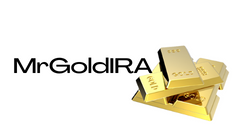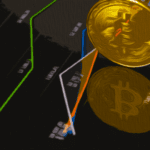
The Slowdown of the Stablecoin Market
Over the past few years, the stablecoin market has experienced a significant slowdown, especially since mid-2022 when Terra's stablecoin collapsed. In addition, the New York Department of Financial Services (NYDFS) instructed Paxos to stop issuing BUSD last year. As a result of these setbacks, the supplies of three other stablecoin assets have drastically reduced, receiving minimal attention. One such stablecoin, Gemini's GUSD, has seen a staggering 93% reduction in its supply.
Dollar-Pegged Tokens Facing Challenges
As of the close of June 2023, Gemini's GUSD ranked as the ninth largest stablecoin by market capitalization. It also received an A grade from the independent stablecoin rating firm Bluechip. However, the report pointed out that GUSD is not widely used in the crypto markets and lacks significant liquidity on exchanges. At that time, GUSD's market capitalization was approximately $564.86 million, but it has now plummeted by 93.10% to $38.93 million.
To put this into perspective, Gemini's stablecoin now represents only 0.0423% of USDT's $92.10 billion market cap. Furthermore, GUSD's global trade volume over the past day barely exceeded one million dollars, while USDT's volume reached $52.51 billion. As a result, GUSD's ranking dropped from the ninth largest stablecoin to the 24th, currently sitting at 667th among 12,000 crypto assets. While GUSD is primarily traded on Gemini, it is also available on Coinbase and Curve.
The Decline of Other Stablecoins
Another stablecoin that has experienced a decline this year is Paxos' pax dollar (USDP), which had a market valuation of one billion dollars until the end of June. Currently, USDP's market cap has diminished to $369 million, reflecting a 63% downturn or a loss of $631 million. Despite this decline, USDP still holds its position as the ninth largest stablecoin by market valuation, although it was the seventh largest in June 2023. While the decrease in BUSD issued by Paxos was expected, the subsequent shrinkage of USDP came as a surprise.
However, Paxos recently received approval from NYDFS and is planning to expand the presence of its stablecoin on Solana. On the other hand, the stablecoin has only managed a global trade volume of $3.87 million, significantly overshadowed by giants like USDC, which saw $9.49 billion in trades over the past day. Another fiat-backed digital currency, magic internet money (MIM), created by the defi project Abracadabra Money, has also fallen in the stablecoin hierarchy. Before Terra's downfall, MIM ranked as the sixth largest stablecoin.
Currently, MIM has dropped to the 21st spot, falling from a market valuation of $2.81 billion in April 2022 to today's $51 million. Earlier this year, around the end of February, MIM's market cap was twice its current size before experiencing a sharp contraction. With a trading volume of approximately $309,079, MIM's activity is notably low, even when compared to smaller trade volumes. Presently, MIM is most actively traded on Trader Joe, with other notable platforms including Camelot and Uniswap V3, primarily paired with wrapped avalanche (WAVAX).
A Sense of Impermanence in the Market
GUSD, USDP, and MIM have experienced significant declines over the past 12 months, creating a sense of impermanence in the stablecoin market. MIM's decline started after Terra's UST lost its value, while GUSD's and USDP's downturns occurred in 2023. The failure of UST had a profound impact on the crypto industry, and even USDC experienced a depegging incident when Silicon Valley Bank collapsed in March 2023. With these memories of turbulent waters, the stablecoin market is now at a crossroads. While there is cautious optimism, no one knows what the future holds for stablecoins.
What are your thoughts on the descent of GUSD, USDP, and MIM over the past year? Feel free to share your opinions in the comments section below.
Frequently Asked Questions
How much money should I put into my Roth IRA?
Roth IRAs are retirement accounts where you deposit your own money tax-free. The account cannot be withdrawn from until you are 59 1/2. If you decide to withdraw some of your contributions, you will need to follow certain rules. You cannot touch your principal (the amount you originally deposited). This means that regardless of how much you contribute to an account, you cannot take out any more than you initially contributed. If you decide to withdraw more money than what you contributed initially, you will need to pay taxes.
The second rule states that income taxes must be paid before you can withdraw earnings. You will pay income taxes when you withdraw your earnings. Let's suppose that you contribute $5,000 annually to your Roth IRA. Let's say you earn $10,000 each year after contributing. You would owe $3,500 in federal income taxes on the earnings. You would have $6,500 less. You can only take out what you originally contributed.
The $4,000 you take out of your earnings would be subject to taxes. You'd still owe $1,500 in taxes. On top of that, you'd lose half of the earnings you had taken out because they would be taxed again at 50% (half of 40%). So, even though you ended up with $7,000 in your Roth IRA, you only got back $4,000.
There are two types if Roth IRAs: Roth and Traditional. Traditional IRAs allow pre-tax contributions to be deducted from your taxable tax income. You can withdraw your contributions plus interest from your traditional IRA when you retire. You can withdraw as much as you want from a traditional IRA.
Roth IRAs do not allow you to deduct your contributions. But once you've retired, you can withdraw the entire contribution amount plus any accrued interest. Unlike a traditional IRA, there is no minimum withdrawal requirement. You don’t have to wait for your turn 70 1/2 years before you can withdraw your contributions.
What is a Precious Metal IRA (IRA)?
A precious metal IRA allows you to diversify your retirement savings into gold, silver, platinum, palladium, rhodium, iridium, osmium, and other rare metals. These precious metals are extremely rare and valuable. They make excellent investments for your money and help you protect your future from inflation and economic instability.
Precious metals often refer to themselves as “bullion.” Bullion refers only to the actual metal.
Bullion can be purchased through many channels including online retailers and large coin dealers as well as some grocery stores.
An IRA for precious metals allows you to directly invest in bullion instead of purchasing stock shares. This means you'll receive dividends every year.
Unlike regular IRAs, precious metal IRAs don't require paperwork or annual fees. Instead, you pay only a small percentage tax on your gains. Plus, you get free access to your funds whenever you want.
How do I open a Precious Metal IRA
First, decide if an Individual Retirement Account is right for you. Once you have decided to open an Individual Retirement Account (IRA), you will need to complete Form 806. For you to determine the type and eligibility for which IRA, you need Form 5204. This form should be completed within 60 days after opening the account. Once this has been completed, you can begin investing. You might also be able to contribute directly from the paycheck through payroll deduction.
Complete Form 8903 if your Roth IRA option is chosen. Otherwise, the process is identical to an ordinary IRA.
You'll need to meet specific requirements to qualify for a precious metals IRA. The IRS stipulates that you must have earned income and be at least 18-years old. Your annual earnings cannot exceed $110,000 ($220,000 if you are married and file jointly) for any tax year. Contributions must be made on a regular basis. These rules will apply regardless of whether your contributions are made through an employer or directly out of your paychecks.
You can invest in precious metals IRAs to buy gold, palladium and platinum. However, physical bullion will not be available for purchase. This means you won’t be able to trade stocks and bonds.
You can also use your precious metallics IRA to invest in companies that deal with precious metals. This option may be offered by some IRA providers.
However, there are two significant drawbacks to investing in precious metals via an IRA. First, they are not as liquid or as easy to sell as stocks and bonds. It's also more difficult to sell them when they are needed. They don't yield dividends like bonds and stocks. Also, they don't generate dividends like stocks and bonds. You will eventually lose money rather than make it.
How does a Gold IRA account work?
People who wish to invest in precious metals can use Gold Ira accounts as a tax-free investment vehicle.
You can purchase physical bullion gold coins at any point in time. You don't have to wait until retirement to start investing in gold.
The beauty of owning gold as an IRA is you can hold on to it forever. You won't have to pay taxes on your gold investments when you die.
Your gold is passed to your heirs without capital gains tax. And because your gold remains outside of the estate, you aren't required to include it in your final estate report.
To open a IRA for gold, you must first create an individual retirement plan (IRA). Once you've done that, you'll receive an IRA custody. This company acts in the role of a middleman between your IRS agent and you.
Your gold IRA custodian is responsible for handling all paperwork and submitting the required forms to the IRS. This includes filing annual reports.
Once your gold IRA is established, you can purchase gold bullion coins. Minimum deposit required is $1,000 If you make more, however, you will get a higher interest rate.
Taxes will be charged on gold you have withdrawn from an IRA. You'll have to pay income taxes and a 10% penalty if you withdraw the entire amount.
However, if you only take out a small percentage, you may not have to pay taxes. However, there are some exceptions. You'll owe federal income tax and a 20% penalty if you take out more than 30% of your total IRA assets.
You should avoid taking out more than 50% of your total IRA assets yearly. Otherwise, you'll face steep financial consequences.
What does gold do as an investment?
Supply and demand determine the gold price. It is also affected by interest rates.
Due to limited supplies, gold prices are subject to volatility. Physical gold is not always in stock.
Statistics
- Instead, the economy improved, stocks rebounded, and gold plunged, losing 28 percent of its value in 2013. (aarp.org)
- You can only purchase gold bars at least 99.5% purity. (forbes.com)
- Indeed, several financial advisers interviewed for this article suggest you invest 5 to 15 percent of your portfolio in gold, just in case. (aarp.org)
- This is a 15% margin that has shown no stable direction of growth but fluctuates seemingly at random. (smartasset.com)
- The price of gold jumped 131 percent from late 2007 to September 2011, when it hit a high of $1,921 an ounce, according to the World Gold Council. (aarp.org)
External Links
finance.yahoo.com
law.cornell.edu
- 7 U.S. Code SS 7 – Designation of boards of trade as contract markets
- 26 U.S. Code SS 408 – Individual retirement account
forbes.com
- Gold IRA – Add Sparkle to Your Retirement Nest Egg
- Understanding China's Evergrande Crisis – Forbes Advisor
investopedia.com
How To
How to keep physical gold in an IRA
The most obvious way to invest in gold is by buying shares from companies producing gold. But this investment method has many risks as there is no guarantee of survival. Even if the company survives, they still face the risk of losing their investment due to fluctuations in gold's price.
An alternative option would be to buy physical gold itself. You will need to either open an online or bank account or simply buy gold from a reliable seller. This option offers the advantages of being able to purchase gold at low prices and easy access (you don’t need to deal directly with stock exchanges). It's also easy to see how many gold you have. You'll get a receipt showing exactly what you paid, so you'll know if any taxes were missed. There's also less chance of theft than investing in stocks.
However, there are disadvantages. For example, you won't benefit from banks' interest rates or investment funds. Additionally, you won’t be able diversify your holdings. You will remain with the same items you bought. Finally, the taxman may ask you about where you have put your gold.
If you'd like to learn more about buying gold in an IRA, visit the website of BullionVault.com today!
—————————————————————————————————————————————————————————————-
By: Jamie Redman
Title: Stablecoin Storm — Gemini’s GUSD Shrinks 93% Amidst Market Turbulence
Sourced From: news.bitcoin.com/stablecoin-storm-geminis-gusd-shrinks-93-amidst-market-turbulence/
Published Date: Wed, 03 Jan 2024 17:30:57 +0000



















